The anti-pollution sticker aims to limit pollution in large cities. It classifies vehicles into 6 colours and levels according to their age and motorisation. Private vehicles are not the only ones concerned. Indeed, commercial vehicles, two-wheelers, buses and lorries must also apply this obligation. They may face penalties otherwise.
For several years, Europe has been facing increasingly frequent periods of heat waves. These have become a matter of daily concern.
In France, these climatic events very often hit national and regional headlines. When they occur, most large cities experience more or less significant peaks in ozone pollution. In summer, the heat waves cause an increase in air pollution and lead to restrictions on car traffic. With the heat and road traffic, ozone pollution is regularly reported in many French regions and measures such as reduced speed and differentiated traffic may be applied.
In addition to these seasonal pollution peaks, there are also more or less significant fine particle pollution phases depending on the climate, heating consumption and road traffic density. Whether it is ozone or fine particles, pollution impacts our daily lives and our environment. For several years, specialists have been alerting us to the harmful effects it can have on our health.
Pollution: Health Consequences
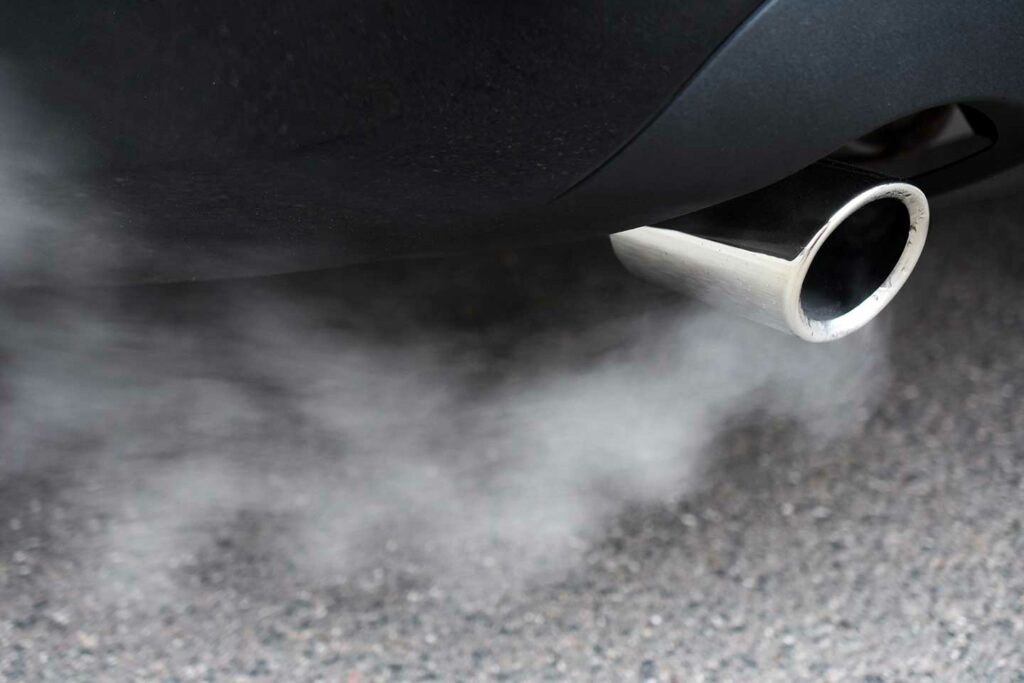
Pollution significantly increases eye, nose and throat irritation. There is also a decrease in respiratory capacity for some people and, depending on the peak periods, an aggravation of asthma attacks and more serious respiratory infections.
Following the various studies carried out at the request of the French Ministry of Health, an information threshold has been set up to gauge air quality. The analyses carried out regularly by scientists make it possible to alert the public authorities. Depending on the health recommendations of experts and the analysis of information regarding air quality, they are empowered to alert local authorities and implement action plans with the aim of reducing ozone pollution. or fine particles.
In some cases, they can even establish prefectural recommendations for the population and users. Depending on the situation and the risks incurred, the prefect can take a number of decisions to reduce the impact of pollution episodes.
The prefecture has the possibility of asking drivers to reduce, for example, the speed on the roads and motorways, to set up the alternating traffic system or even to implement the use of specific stickers allowing the least polluting vehicles to continue to circulate.
What is the Crit’air sticker used for?
In order to contribute to the reduction and improvement of air quality during pollution peaks, the French government has set up the Crit’air sticker.
It is a round-shaped sticker to be stick on the bottom right section of the windshield, inside light, heavy or commercial vehicles. If you are using a 2 or 3 wheeler, you can stick it on the front part.
This air quality certificate allows vehicles to circulate or park according to their category. Said category will depend on the harmfulness of the polluting rejections emitted by the vehicle. Indeed, if your vehicle is less polluting, you will be able to circulate more freely.
The Crit’air sticker (link in French) is required in certain areas of major cities. It involves you in the protection of the environment. Since January 16, 2017, the Crit’air sticker has been mandatory for driving in Paris and optional in other regions of France. The implementation of the sticker depends on the local authorities and their particular situations.
What are the categories of anti-pollution stickers?
There are 6 categories to classify vehicles according to their date of entry into service and their type of fuel. This classification makes it possible to set rules for the circulation of vehicles, from the least polluting to the most polluting:
Green and white Crit’air stickers
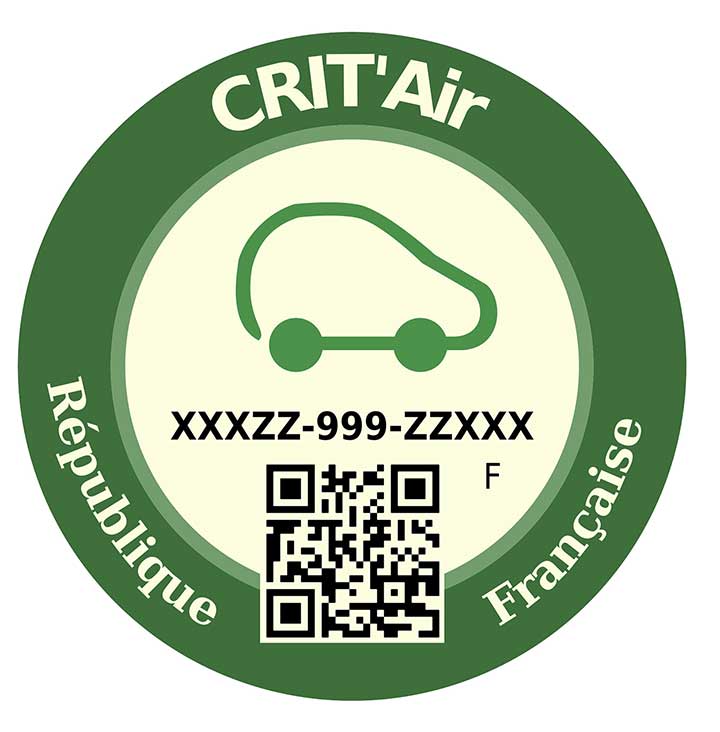
The green and white anti-pollution stickers are intended for electric or hydrogen-powered vehicles, i.e. non-polluting with 0 emissions.
Mauve Crit’air stickers
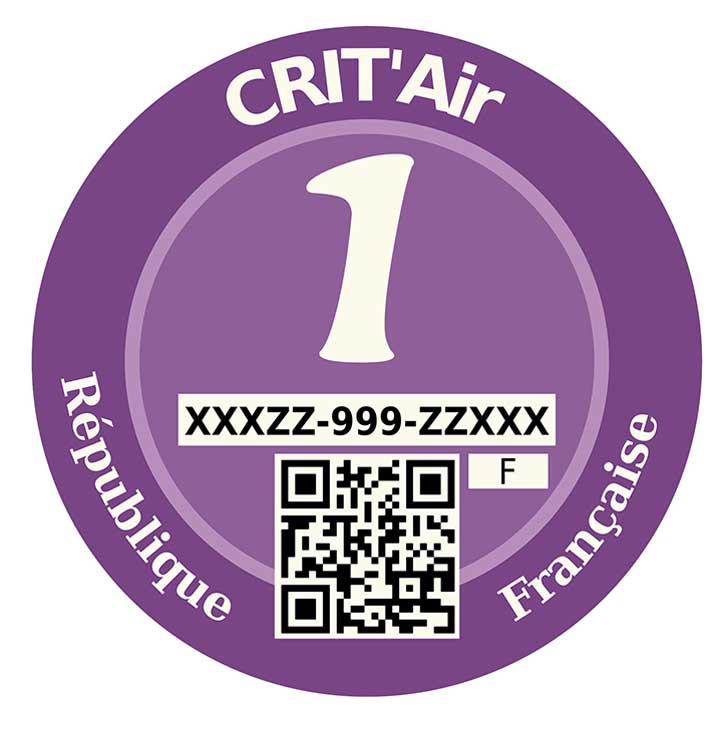
Mauve Crit’Air stickers (n°1) are intended for hybrid or petrol vehicles meeting the Euro 5 and Euro 6 standards, which were put into circulation from 2011.
Yellow Crit’air stickers
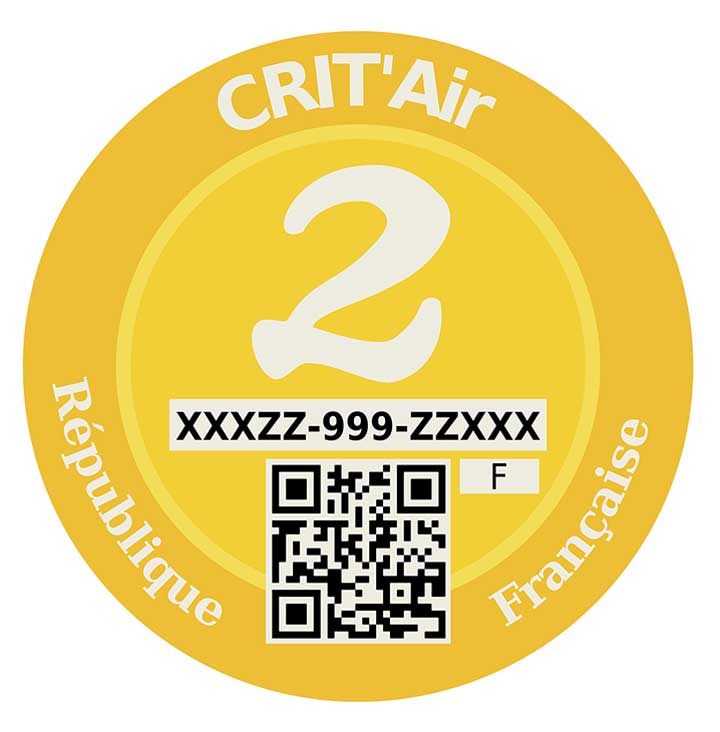
Yellow Crit’air (n°2) stickers are intended for :
- Hybrids or gasoline vehicles meeting Euro 4 standards for vehicles put into service from January 1, 2006 to December 31, 2010.
- Diesel vehicles meeting Euro 5 and Euro 6 standards for vehicles put into circulation from 2011.
Orange Crit’air stickers
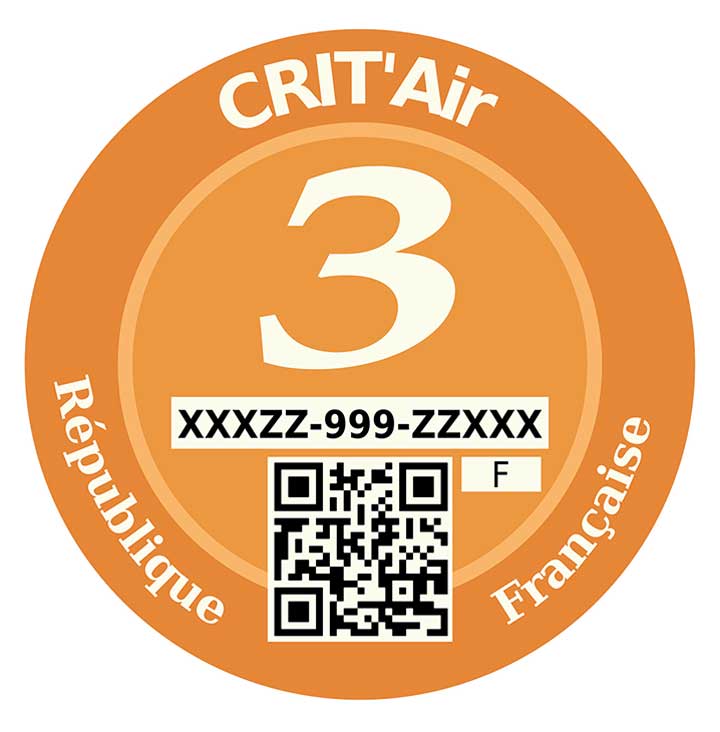
Orange Crit’Air stickers (n°3) are intended for :
- Hybrids or gasoline vehicles meeting Euro 2 and Euro 3 standards for vehicles put into service from January 1, 1997 to December 31, 2005.
- Diesel vehicles meeting Euro 4 standards for vehicles put into service from January 1, 2006 to December 31, 2010.
Brown Crit’air stickers
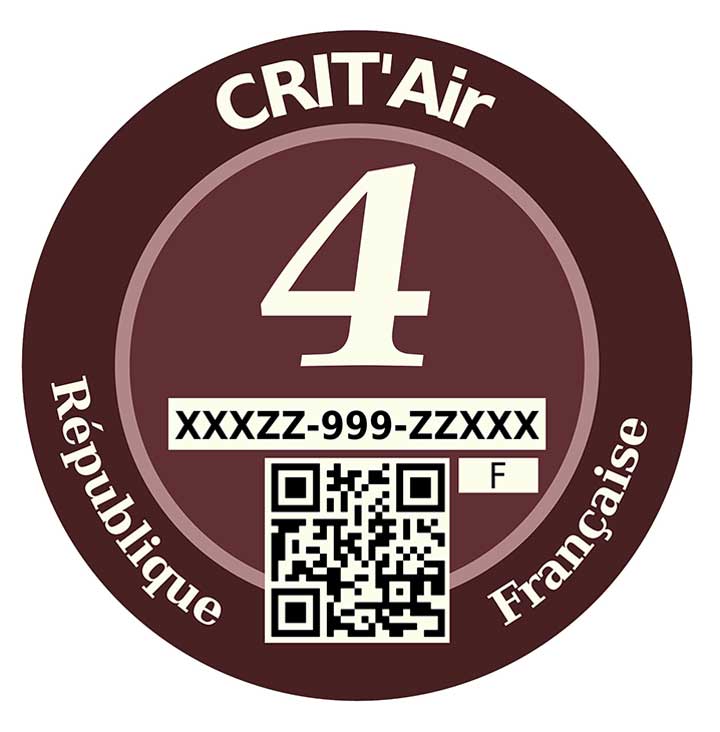
Brown Crit’Air stickers (n°4) are intended for diesel vehicles meeting Euro 3 standards for vehicles put into circulation from January 1, 2001 to December 31, 2005.
Grey Crit’air stickers
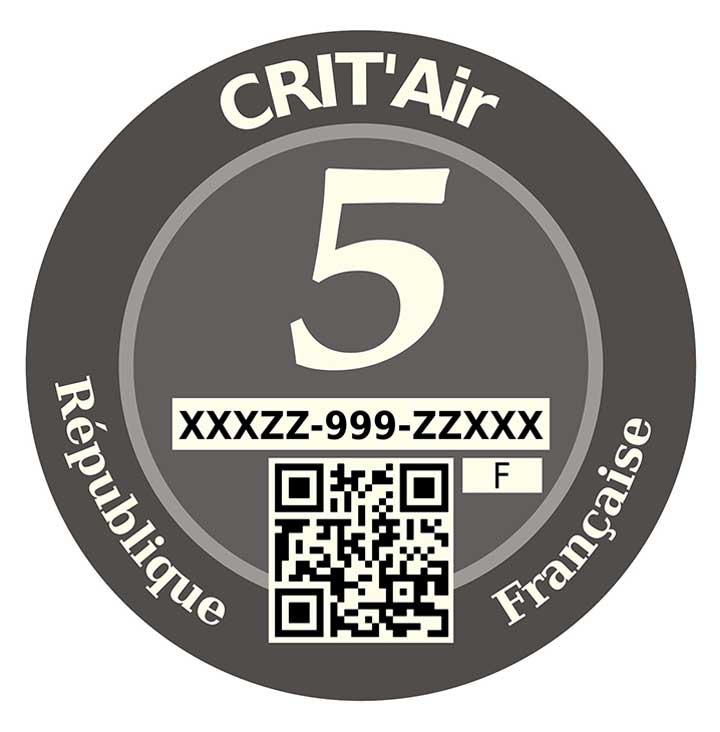
Grey Crit’Air stickers are intended for diesel vehicles meeting Euro 2 standards for vehicles put into circulation between January 1, 1997 to December 31, 2000.
All diesel and petrol vehicles registered before December 31, 1996 are authorized to circulate without a sticker.
Crit’air stickers have no validity period and must remain visible throughout the circulation of the vehicle. In the event you are driving with an unauthorised vehicle, penalties may be applied depending on the seriousness of the offence.
The Crit’air sticker in the growing number of Low Emission Zones!
More and more large cities have taken the lead and decided to define low emission zones, the aim clearly being to improve air quality for their inhabitants. With the establishment of low emission zones, cities create new ones and increase traffic restrictions in order to gradually limit the use of the most polluting vehicles, thus improving the statistics linked to mortality caused by ozone and fine particles. These are areas with differentiated circulation.
What are the penalties for missing a Crit’air sticker?
Lawmakers have introduced several types of penalties to discourage drivers from violating the traffic rules imposed during peak pollution periods. There are two types.
The first type of penalty is a fine of up to €450 if a vehicle enters a restricted area without authorisation. In practice, however, it rarely exceeds 68 euros for light cars and 135 euros for large trucks and buses. However, if this happens again, the vehicle may be seized and confiscated.
Many areas are currently in the experimental stage, and law enforcement rarely control, or purely do so to raise awareness. But in the long term, controls should be systematic and oppressive. Finally, automation projects will be studied through video-fining, particularly in the Paris region.
ASD Group is a company specialising in services related to taxation, customs operations, services related to employee mobility and business strategy. ASD Group can help you obtain your anti-pollution sticker thanks to its solution, ASD SPW, dedicated to the secondment of employees.
Contact our experts to find out more.




